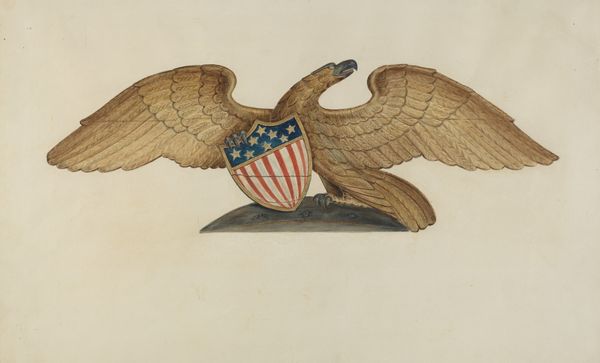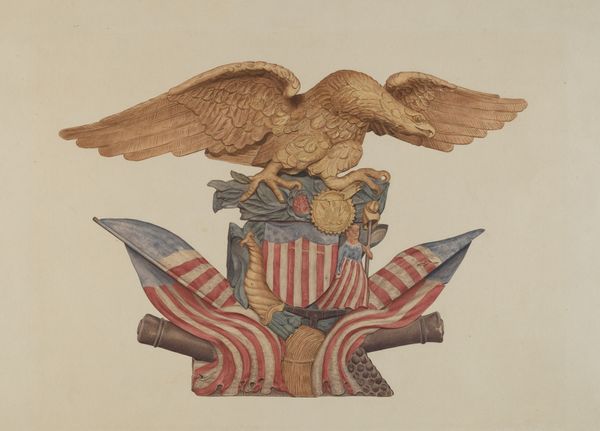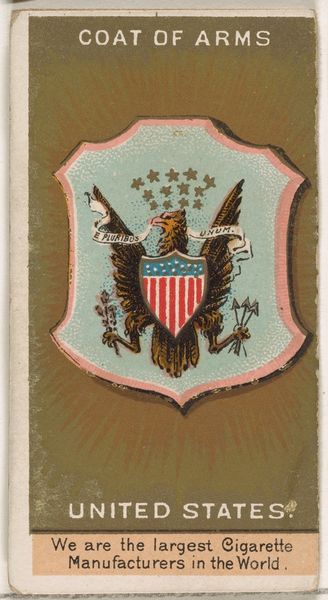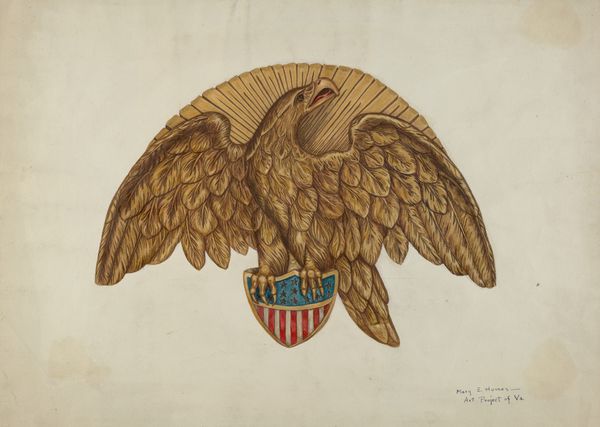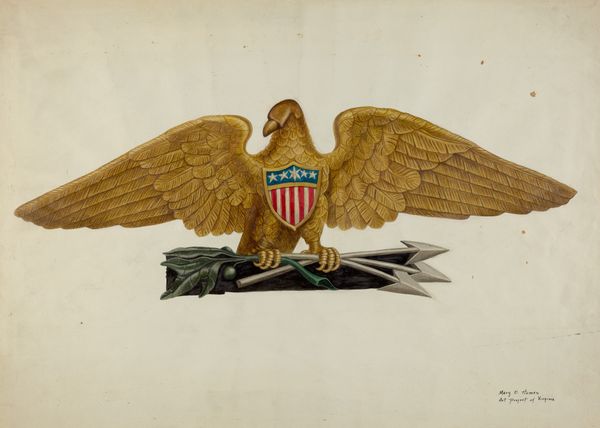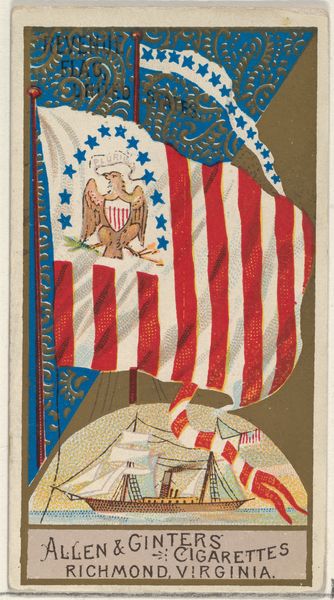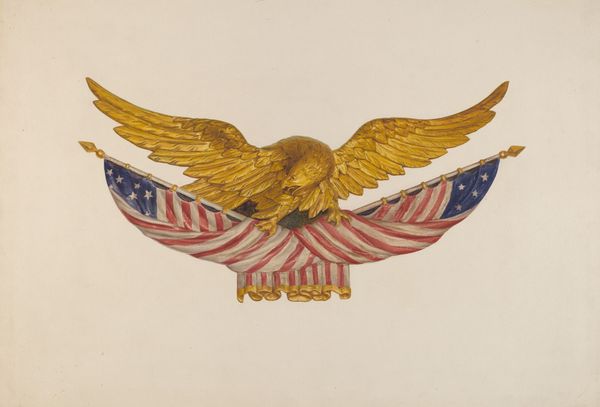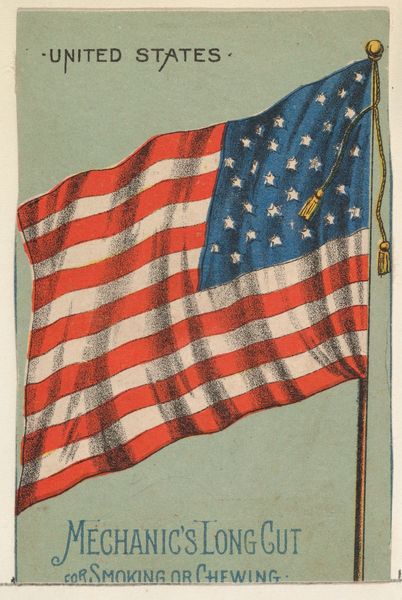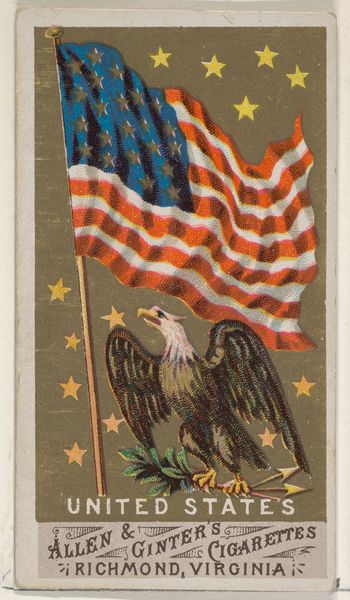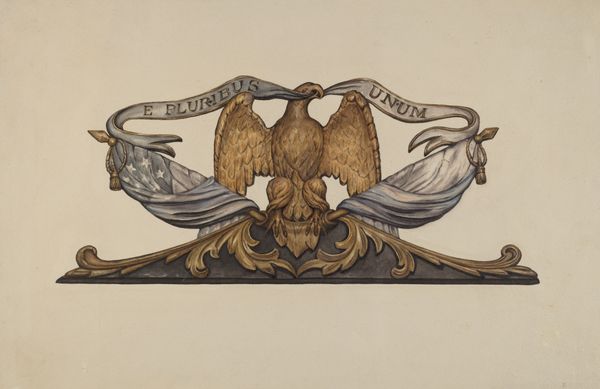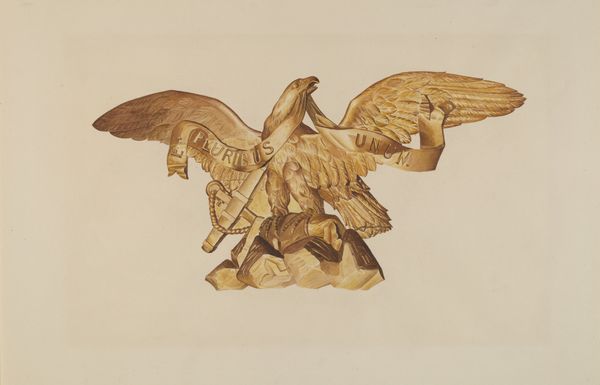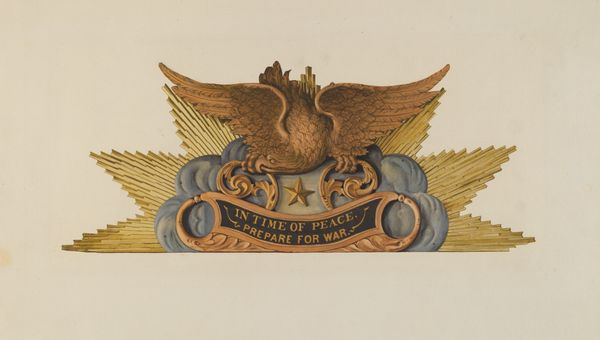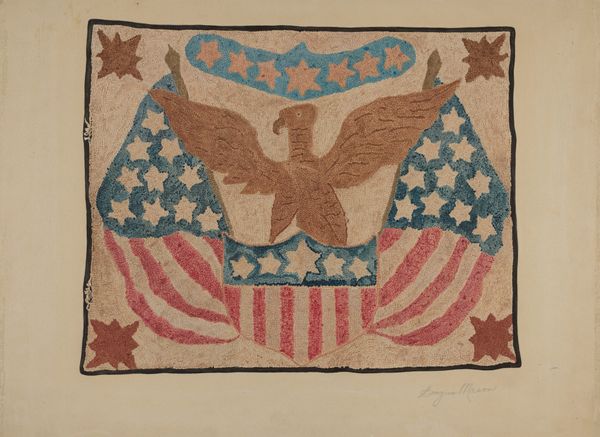
Dimensions: overall: 29.4 x 22.2 cm (11 9/16 x 8 3/4 in.)
Copyright: National Gallery of Art: CC0 1.0
Curator: This piece, entitled "Eagle Emblem," dates to between 1935 and 1942 and is attributed to Bernard Westmacott. He worked with watercolor and colored pencils to achieve this symbolic drawing. Editor: Immediately, I'm drawn to the sketch-like quality. The materials – watercolor and colored pencil – lend it a handcrafted, almost preliminary feel. You see the artist's process laid bare. Curator: Indeed. And those materials serve a potent symbolic purpose. Watercolor lends itself to washes of color, blending ideals perhaps, while the precision of colored pencil captures details representing foundational tenets and specific histories. Look at the way Westmacott renders the olive branch of peace, or the arrows that symbolize the readiness to defend freedom and security, a dichotomy well established through visual language. Editor: Precisely! Note too the paper itself. The weave looks quite ordinary, mass-produced possibly. The economic context is implicit. This wasn't precious vellum, but likely something readily available during this period. What statements are made on such easily acquired surfaces speaks volumes to the artist’s role and motivations, suggesting he or she wasn’t creating an heirloom, but, possibly, agitprop. Curator: Fascinating point. "E Pluribus Unum" and the iconic stars and stripes are of course intended to elicit immediate cultural associations. This symbolic convergence asks viewers to tap into ingrained emotions, memories of nation, of collective identity and historical trajectory. And its deployment invites careful decoding of underlying cultural tensions related to labor, class and immigration. Editor: A crucial consideration, too, is how such an emblem may be disseminated through readily available commercial print. Was this work simply for display, or intended to inspire broader collective labor by unifying an ideal in consumable visual form, through newspapers or posters for example? The question shifts us away from a sole maker in studio practice and opens inquiry into modes of mechanical reproduction for wider consumption. Curator: Food for thought as we delve deeper into this piece and others in the collection. The dialogue itself reveals that a shared visual language relies on material circumstances and deeply rooted symbolic narratives. Editor: Exactly. Analyzing both the symbolic AND the means through which that symbolism takes hold… that gives us the most nuanced understanding.
Comments
No comments
Be the first to comment and join the conversation on the ultimate creative platform.
